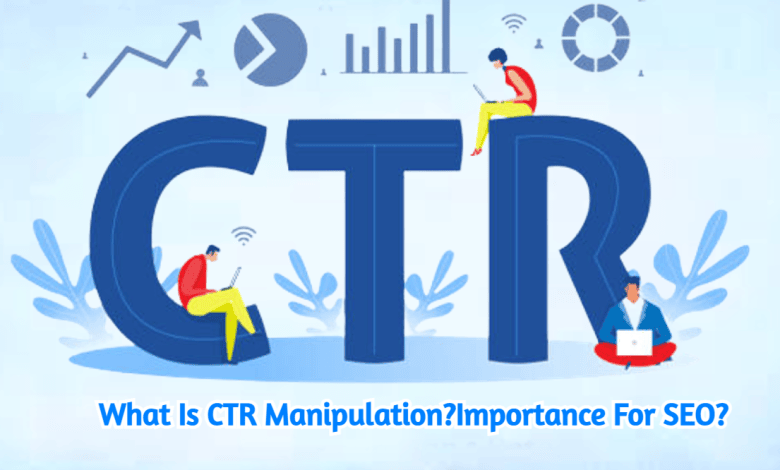CTR Manipulation Service by LinkDaddy to Amplify Your Internet Search Engine Rankings
Wiki Article
The Duty of CTR Control in Digital Advertising And Marketing
In the realm of digital marketing, click-through rate (CTR) adjustment has arised as a double-edged sword, offering marketing professionals the potential to improve campaign efficiency while concurrently raising ethical worries. Understanding the nuances of CTR control involves checking out the methods used to maximize rates and the concrete benefits that can be obtained from them. Nevertheless, as the landscape moves towards better liability, the effects of these practices call for scrutiny. What equilibrium can be struck in between effective approaches and preserving honest honesty in this competitive setting? The response may redefine the future of digital advertising.
Recognizing CTR Adjustment
Comprehending CTR manipulation is important for any individual associated with digital advertising. Click-Through Rate (CTR) acts as a crucial performance indicator, showing the performance of online campaigns by gauging the ratio of users who click on a details web link to the total number of customers that view the ad or web content. Control of CTR can take place via different methods, which may influence both organic search rankings and paid advertising end results.The implications of CTR control are extensive. It can misshape efficiency metrics, causing illinformed choices based upon inflated click prices. As an example, synthetically improving CTR with click ranches or misleading methods not only threatens the honesty of electronic advertising practices but can additionally cause penalties from search engines or ad platforms.
On the other hand, recognizing the all-natural elements that affect CTR-- such as advertisement significance, target market targeting, and creative top quality-- can substantially improve campaign effectiveness. Marketing professionals have to browse the great line in between genuine optimization and underhanded manipulation. A comprehensive understanding of CTR control enables experts to establish approaches that foster genuine engagement, build depend on with customers, and ultimately achieve lasting growth in their digital advertising initiatives.
Strategies for Reliable CTR Approaches
To accomplish reliable Click-Through Price (CTR) strategies, marketing experts must concentrate on a number of vital methods that enhance visibility and interaction. Crafting compelling headings is necessary; headings must be succinct, intriguing, and pertinent to the target audience. A/B screening numerous headings can give insights right into what reverberates ideal.
Second, using distinctive visuals can considerably improve CTR. High-quality photos or videos that enhance the content help capture user focus and encourage clicks. Furthermore, strategically putting phone call to action (CTAs) within the web content is vital. CTAs should project, clearly specified, and positioned at rational factors throughout the customer trip.
Third, enhancing meta summaries is vital for enhancing CTR from search outcomes. These descriptions must supply a clear recap of the web content while consisting of relevant key words to boost search presence. Finally, guaranteeing mobile optimization can not be neglected; a substantial portion of customers accessibility content using mobile gadgets, making receptive design important for preserving an efficient CTR.
Advantages of CTR Control
The benefits of successfully controling Click-Through Rates (CTR) are significant for electronic marketing professionals aiming to improve campaign performance - CTR Manipulation. A higher CTR usually correlates with boosted exposure and interaction, resulting in boosted general conversion prices. By tactically optimizing ad web content and layout, online marketers can bring in even more clicks, thus enhancing their reach and maximizing return on investment (ROI)Furthermore, elevated CTRs can boost Top quality Scores in pay-per-click (PAY PER CLICK) marketing, which can decrease costs and improve ad placements. This produces a virtuous cycle where higher involvement leads to better ad positioning, better driving traffic and conversions.
Additionally, reliable CTR control allows marketing experts to gain useful insights into consumer habits. By assessing which aspects of CTR Manipulation a project drive clicks, marketers can fine-tune their methods and produce more targeted web content that resonates with their audience.

Ethical Effects of CTR Practices
In the realm of electronic advertising, the control of Click-Through Fees (CTR) raises important moral considerations that demand mindful analysis. While enhancing CTR can improve project efficiency, practices targeted at synthetically pumping up these metrics can result in deceptive representations of audience involvement. This control can misguide stakeholders, including financiers and clients, concerning the efficiency of advertising and marketing approaches.In addition, honest dilemmas develop when consumers undergo deceiving advertisements made to increase CTR. Such practices wear down count on between brand names and their target markets, inevitably endangering lasting client connections. Making use of clickbait headlines or misleading content not just breaks customer expectations however can additionally cause reputational damages for brand names that prioritize short-term gains over ethical standards.
Additionally, governing structures are developing to deal with these worries, and online marketers have to remain attentive in abiding by standards that advertise openness and sincerity. Hence, while the quest of greater CTRs is an usual goal in electronic marketing, a dedication to honest techniques is important. Stabilizing performance metrics with moral considerations makes sure sustainable development and cultivates a trustworthy electronic market.
Future Trends in CTR Control

An additional arising trend is the customization of marketing methods. As customers require more pertinent and customized experiences, business will increasingly take advantage of information analytics to develop extremely customized messages that resonate with certain audiences. This customization will likely cause higher CTRs as customers discover material that lines up closely with their interests.
In addition, the assimilation of enhanced reality (AR) and virtual reality (VIRTUAL REALITY) in marketing provides new opportunities for interaction. These immersive experiences can capture focus and enhance the probability of clicks, therefore redefining typical CTR metrics.
Lastly, as governing frameworks around information privacy tighten up, marketing experts will certainly require to browse these challenges while keeping openness and count on. Future CTR adjustment methods will thus need to balance performance with moral considerations, guaranteeing sustainable methods in a swiftly advancing digital landscape.
Final Thought
In final thought, CTR adjustment embodies an intricate interplay between calculated advertising practices and ethical considerations - LinkDaddy CTR Manipulation. While reliable CTR improvement can generate prompt benefits such as raised presence and boosted Quality Scores, the prospective effects on customer count on and brand name track record can not be forgotten.In the realm of digital marketing, click-through price (CTR) manipulation has actually emerged as a double-edged sword, providing marketing professionals the prospective to boost project performance while simultaneously elevating ethical issues.Comprehending CTR adjustment is vital for any person included in electronic advertising and marketing. An extensive understanding of CTR control enables professionals to develop strategies that cultivate authentic engagement, construct trust fund with consumers, and eventually achieve lasting growth in their digital marketing efforts.
In the world of digital advertising, the adjustment of Click-Through Fees (CTR) elevates essential moral considerations that demand mindful analysis.As digital advertising and marketing develops, the landscape of CTR manipulation is positioned for considerable adjustments driven by technical innovations and moving customer expectations.
Report this wiki page